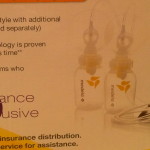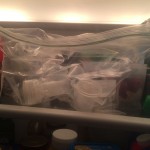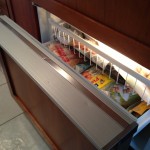While most people say breastfeeding is cheaper than formula feeding, I didn’t save much money nursing. I spent a lot on breastfeeding accessories like freezer storage bags and nursing tanks, but it really was the pump expenses that broke the bank for me.
On the advice of a lactation consultant, I left the hospital after giving birth with a hospital-grade Medela Symphony breast pump that cost about $75 to rent a month. Soon after returning home, I bought a Medela Freestyle pump from Amazon.com for about $300.
However, I was addicted to the stronger, hospital-grade pump, and I just kept renewing the monthly rental until I went back to work at an office that has hospital-grade pumps available for use (My coworkers and I are lucky, I know). In short, I barely used the Freestyle pump, and unfortunately, I can’t really resell it because it’s not supposed to be shared. If only I had opted from the get go for a relatively reasonably priced pump that can be shared. Unfortunately, I didn’t know that such pumps existed.
This is why today’s hint is that those in the market for a breast pump consider opting for such reusable pump models, one of the six ways to cut your breastfeeding bill that I write about on The Frugal Shopper blog.
Most pumps on the market (including the Freestyle) have open-system designs, meaning milk remnants can potentially get into pump parts that can’t be cleaned. For this reason, Medela and other makers of open-system pumps recommend against sharing personal pumps.
In contrast, similarly priced closed-system pumps on the market, like the EnJoye model from Hygeia, have a barrier between the pumping and milk collecting parts. This means that such pumps can be shared by multiple moms, assuming each mom has her own pumping accessory set (think tubing, etc.). In other words, if you opt for such a closed-system model, you may be able to more easily sell your pump down the road, and even share it with another mom from the get go. Or, since it’s okay to buy such pumps used, you may be able to find a good deal on a hand-me-down, closed-system model.
To be sure, there are other frugal strategies for obtaining a pump. Some moms, including ones I know, are fine with using hand-me-down open-system pumps, despite manufacturer warnings.
In addition, your health insurance can potentially help lower the cost of renting and buying a pump, as many insurance companies are required to provide such coverage as part of the Affordable Healthcare Act. Still, as Ann Carrns pointed out on The New York Times’ Bucks blog last year, the pump you want may not necessarily be covered fully, or at all, by your plan.
So this is why I suggest going from the get go for a shareable pump that you can buy new or used, and then easily resell.
Finally, I’m not the only one who wishes she had discovered such pumps earlier, or who recommends going with a closed-system model. Back in 2011, Kristen Chase over at Cool Mom Picks, for instance, called the Hygeia EnJoye breast pump “the best breast pump you’ve never heard of.” Similarly, Jamie Grayson, aka The Baby Guy, calls the Hygeia EnJoye “the best pump on the market,” and he told the Rookie Moms last fall that he recommends the Hygeia EnJoye model for reasons including its “shareability and eco-friendliness.” Meanwhile, the Rookie Moms include it on their baby registry guide.
Read all six of my tips for making breastfeeding more affordable over at The Frugal Shopper, a new U.S. News Money blog. What are your tips for cutting the costs associated with pumping, breastfeeding and formula feeding? Share them below.
Follow Hint Mama on Facebook and Twitter, and read more about her and her disclosures.
Feature image photo credit: Hygeia






